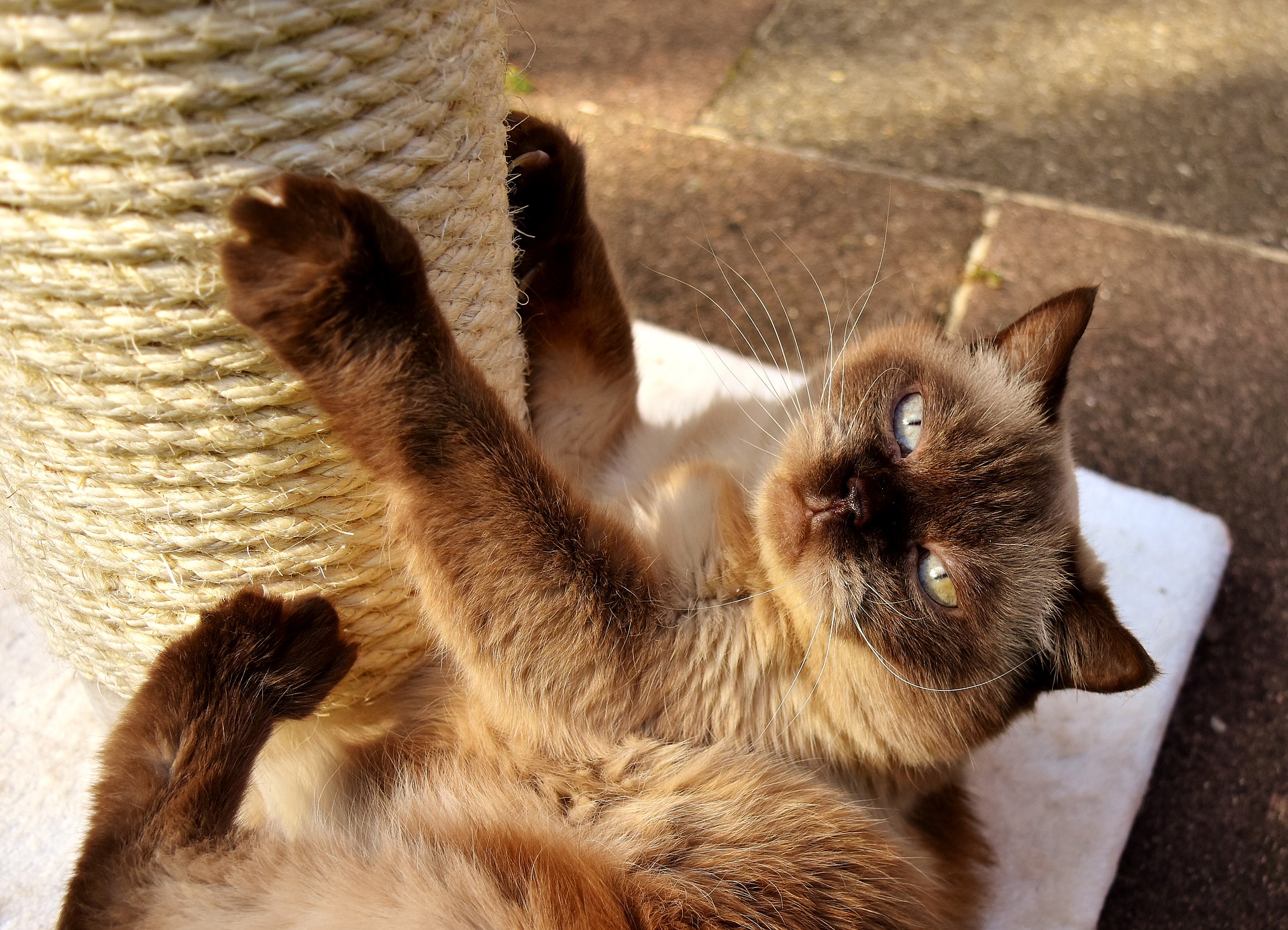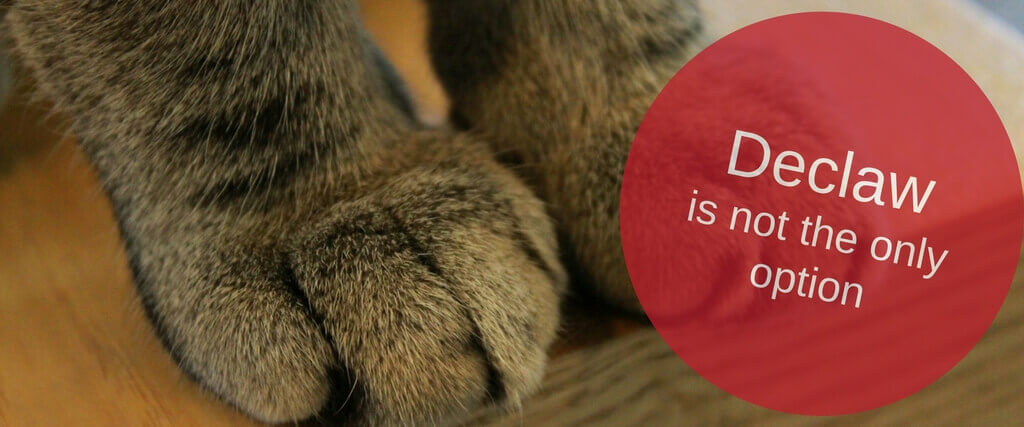You've probably watched your cat stretch his paws wide, extend those claws, and yes, even sharpen them on your door frame or furniture. It’s instinctual.
If this is an ongoing issue, and your cat has chosen your furniture as the scratching post of choice, you might wonder if cat declawing is a good idea.
After all, if your cat no longer has his claws, he can’t rip your furniture to shreds. While that might sound like a good idea in theory, in reality, cat declawing is a highly controversial practice. In fact, many veterinarians will decline to perform this surgical procedure and it’s banned in England, Australia, and other countries. Even several states are considering a ban.
The reason is that, far from being a simple nail clipping, like you might think at first, cat declawing or “onychectomy” actually maims your cat.

Why Cat Declawing Is a Type of Amputation
To the untrained eye, you may think your cat’s claws are similar to your fingernails. But unlike fingernails, cat claws are structurally part of your cat’s paw and in a whole different league.
In fact, cat declawing is less like trimming fingernails and more like cutting the tip of your finger off. Ouch!
“The way cats are normally declawed, there’s an instrument with a sliding blade, almost like a guillotine, and it cuts a straight line through the joint between that little piece of bone and the next piece of bone, which is much bigger. When you do that, right underneath that is the pad, and you actually cut that right in half too. So it’s like cutting the tip of your finger off.” (Source)
That’s what happens to your cat after declawing. Your kitty has lost the tips of his toes and it’s going to take a while to heal. Your kitty might even have trouble balancing until he gets used to the “new normal.”
Since so many cat owners are unaware of the reality of cat declawing, “The American Association of Feline Practitioners (AAFP) strongly believes it is the obligation of veterinarians to provide cat owners with alternatives to declawing (onychectomy)." Along with the initial pain, as declawed cats age, there is some increased risk for infection and long-term nerve trauma.
American Veterinary Medical Association suggests that “Declawing of domestic cats should be considered only after attempts have been made to prevent the cat from using its claws destructively or when it’s clawing presents a zoonotic risk for its owner(s).”
Is There Ever a Time When Cat Declawing is Acceptable?
There are medical reasons you may need to declaw a cat. One such instance is if your cat’s claw is severely damaged. There’s also that rare instance that there’s someone in your household who has a suppressed immune system, and potential bacteria on your cat’s claws puts them at risk. Your veterinarian will help you assess your situation and explore the alternatives with you. In some cases, cat declawing is a reasonable alternative to giving your cat to the shelter or euthanizing him.
So What are Alternatives to Cat Declawing? 
Providing your cat with appropriate alternatives to using your furniture as a scratching post (and training him to use them) is always a good idea. You're familiar with scratching posts, of course, and there are also sisal mats that can be good for kitties to get their scratch on.
Additionally, you can trim your cat’s nails once or twice a month.
You might even try a product called Soft Claws. These are vinyl caps that slip over your cat’s nails and applied with a surgical adhesion. Your vet can help you determine if this is a good option for you and your cat. If your cat is older, it may take a little effort on your end to help him change his habits.
“Depending on what surface you want to protect, consider using some or a combination of the following kitty scratching deterrents:
- Aluminum foil
- Double-sided tape (your kitty cannot stand the feel of sticky tape on his paws)
- Plastic sheeting
- Plastic carpet runners
- Car or chair mats with the spiky sides up” (Source)
As you can see, there are options that will protect your furniture and help your kitty keep his paws intact. If you have any questions about your cat’s behavior or you’re considering cat declawing surgery, please make an appointment to discuss with one of our veterinary team members.

